MBDA describe the Meteor BVRAAM missile as;
Meteor is the next generation Beyond Visual Range Air-to-Air Missile (BVRAAM) system designed to revolutionise air-to-air combat in the 21st Century. The weapon brings together six nations with a common need to defeat the threats of today as well as the emerging threats of the future. Guided by an advanced active radar seeker, Meteor provides all weather capability to engage a wide variety of targets from agile fast jets to small UAVs and cruise missiles. It is designed to meet the most stringent of requirements and is capable of operating in the most severe of clutter and countermeasure environments. The weapon is also equipped with data link communication. Aimed at meeting the needs of a network centric environment, Meteor can be operated using third party data, enabling the Meteor user – the pilot – to have the most flexible weapon system,
It is currently in service on Typhoon, and in due course, the F-35B.

Meteor BVRAAM History
The History of the Meteor Beyond Visual Range Air to Air Missile (BVRAAM) goes back to the early nineties with the requirement to replace the Skyflash AAM on the Eurofighter 2000, it was intended to be in service by 2000.
Staff Requirement (Air) 1239 was also caught up in industrial politics at the time, like ASRAAM.
And so, the RAF’s Future Medium Range Air to Air Missile (FMRAAM) would be put to competition.
Initially, there were two contenders; Hughes with an improved AIM-120 AMRAAM and a BAE-led consortium, called S225X, comprising Saab, GEC Marconi Dynamics and Alenia.
Whilst the requirement was still being firmed up the main issue of uncertainty was range, although identification issues of concern, BAE did state that it was considering a boost-coast-boost system to increase energy in the ‘end-game’
BAE also proposed a two-concept approach, the S225X with a dual pulse rocket motor and the longer-range S225XR that had made use of a rocket/ramjet.
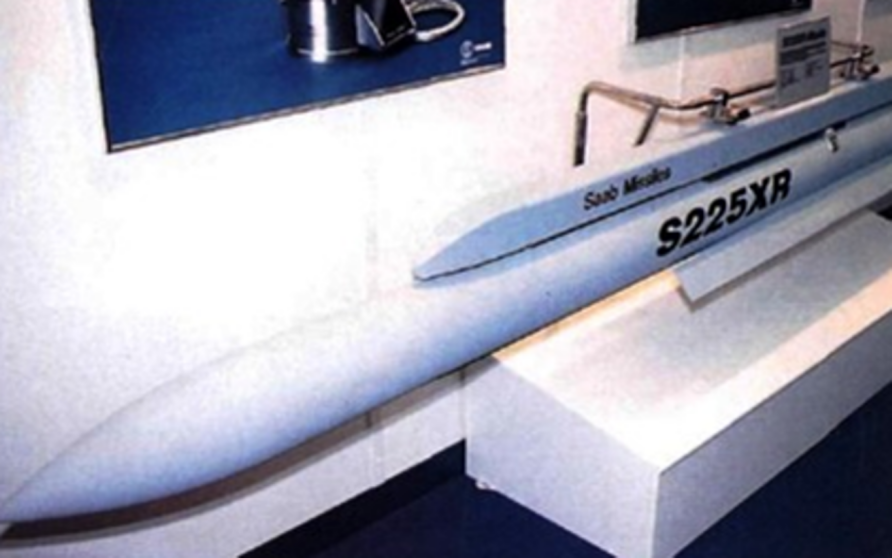
S225X drew on earlier design studies completed by the industrial consortium; merging earlier requirements, Advanced Air to Air Missile (A3M) and Future Operational Requirement MICA (FORMICA)

The BAE offering also provided for a two-tier approach, an active radar seeker first in 2003 and then a dual-mode radar/IR seeker in 2010.
As the requirement changed to reflect a greater understanding of emerging threats, the requirement changed.
Russian aircraft with IRST and extreme agility could not only see weapon launches at long range, but they could also defeat them either with ECM or simple physics.
The ramjet-powered R-77 also complicated matters enormously.
This meant longer range, ECM resistance and extreme agility at range became the defining requirements for SR (A) 1239 and FVRAAM.
By 1995 the competition had been formalised, and the field widened, Matra weighing in with a MICA variant and Hughes were proposing a ramjet variant of AMRAAM. Kentron from South Africa were also at the time considering entering the competition.
Several variations on passive radar, active radar (J and K band) and passive infra-red seekers were also being variously proposed by the emerging competitors. Hughes also proposed a Variable Flow Ducted Rocket version of their AMRAAM design.
BAE received interest from Volvo and Bayern-Chemie for the ramjet that would power the S225XR. Bayern-Chemie was also involved with the DASA A3M.
The Hughes consortium included Shorts, Matra Thomson Thorn, Aérospatiale, and Fokker, cheekily, they called their missile the FVRAAM.
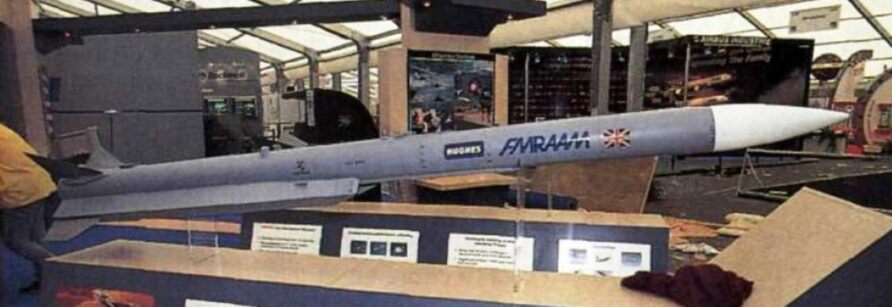
This meant the RAF had to rename the requirement from FVRAAM to BVRAAM!

The European entries remained fragmented until BAE went through a round of intense negotiation and deal-making, something for which they get little credit. If there was a credible European alternative to the Hughes bid (which also contained a great deal of European content) it was because of BAE.
By 1996, it was more or less a simple choice between Hughes (with a load of European companies) and BAE (with a load of other European companies).
It is also interesting to speculate on reasons why the USAF remained largely out of defining a long-range requirement, many at the time put the reluctance down to protecting the F-22 from an F-15/BVRAAM competitor.
There was also a strong desire in European industry for a European solution. The ongoing saga of ASRAAM and the reluctance of the USA to allow AIM120 integration with Gripen were considered clear indicators of protectionism.
The BAE offering, now including Matra, Daimler-Benz LFK, Saab, Alenia and GEC Marconi, became Meteor in 1996.

After a number of bid clarification sessions, the MoD concluded that there was too much uncertainty in both submissions and, rather than decide on full-scale development, awarded two £5m risk reduction studies to both Hughes and BAE in 1997.
A second ITT was issued the same year.
More delays followed as a result of pre-election ‘purdah’ and the post-election 1998 SDR. Other European nations were also showing some interest in obtaining the data from the risk reduction studies and formulating similar requirements, especially Gripen and Eurofighter nations.
Hughes used the delay to add Diehl, and confirmed that Shorts Missile Systems would continue their involvement, as would Aérospatiale Missiles, with their RASCAL liquid fuel ramjet and an integral nozzle-less solid-propellant boost charge. Diehl would also use Thomson-Thorn Missile Electronics on the warhead and fuze assembly.
To assuage fears about US political interference with arming the Eurofighter, the US Secretary of Defense wrote to the UK with assurances about export issues.
There is no doubt that the New Labour government preferred a European solution and in July 1998, a statement of intent was signed by the UK, Germany, Italy, Sweden, and Spain that agreed such the UK select Meteor, the others would procure the same missile.
By then, it was clear there would be a looming gap between the Eurofighter Typhoon coming into service and Meteor being ready for deployment. This allowed Raytheon to offer a graduated approach with AMRAAM with various proposals that took the AMRAAM design with improvements towards the full SR(A) 1239 requirement.
In 1999, France also expressed an interest in the Meteor project with offers of 20% funding, but only if the UK selected it. France joined the programme at the end of the year.
The UK was, for all intents and purposes, caught in a US/Europe industrial power struggle, lobbying from various heads of state and continued through the late nineties, adding yet more delays. Offers and counteroffers continued to be made, and the fading shine of the Russian missile industry continued to play into the hands of those suggesting a lower specification would be sufficient.
After pulling out in 1998, Sweden re-joined in 1999.
Meteor was increasingly a political decision and the 2008 in-service dates were looking fanciful.
Meanwhile, the consolidation of European defence manufacturers had continued apace; Matra, BAE Dynamics, Alenia and GEC Marconi were by now, MBD.
In May 2000, the MoD announced the UK had selected Meteor.
The CEO of MBD said;
This decision marks a historic milestone in the establishment of a European defence capability. For the first time, Europe will equip its fighter aircraft with a European air-to-air missile, creating interoperability and independence to export
In 2001, Aérospatiale joined MBD and MBDA was formed.
Following the decision, a round of negotiation and yet more industrial trade-offs commenced. Germany was particularly difficult, delaying funding for two years and causing MBDA to commit its funds for the German motor provided by Bayern-Chemie, an irony not lost on an increasingly exasperated industry.
Germany eventually approved funding and promptly cut its requirement by more than 50%, oh Germany.
In 2002, £1.2 Billion £1.2 Billion for the demonstration and manufacture phases was awarded.
Geoff Hoon, SoS Defence said;
Meteor is a new concept in air-to-air weaponry. Its unique air-breathing motor will make it very difficult to evade, and state of the art electronics will make it the most effective air-to-air weapon we have seen. Today’s contract signing is the culmination of a complex process to provide Typhoon partner nations, with the best technology available to complement the aircraft. I am sure that Meteor will be an example of what can be achieved through the combined efforts of European defence industries
The Defence Select Committee concluded;
The Meteor missile has some clear advantages over its Raytheon competitor—it appears to offer the more militarily effective solution; it should help rationalise and consolidate the European missile industry, and provide future competitions with a counterweight to U.S. dominance in this field; and it entails a lower risk of constraints on Eurofighter exports. Although the programme is in its early days, it also offers the prospect of avoiding some of the problems that have plagued other European procurement collaborations, without arbitrary workshare divisions and with a clear project leadership role to be provided by the UK. The MoD needs to take advantage of that leadership role to keep momentum behind the project, including an early contract which will lock-in not just the contractor but also the commitments of our international partners. The cautious definition of the missile’s target in-service date may be realistic, particularly in view of the technological challenges that will have to be overcome, but in BVRAAM’s case it is a date that must be met if Eurofighter is to fulfil its potential.
The contract also only covered manufacturing for the RAF, nor did it address the Meteor and Typhoon ISD gap and so a £200m contract was awarded to Raytheon for the AIM-120 missile as an interim.
The first flight of Meteor was in 2005, from a French Navy Rafale F2. Gripen and Typhoon firings have also been completed as part of the extended development programme. Since then, development has continued and production orders from the partner nations and Saudi Arabia, Qatar and Egypt also, production commenced in 2012.
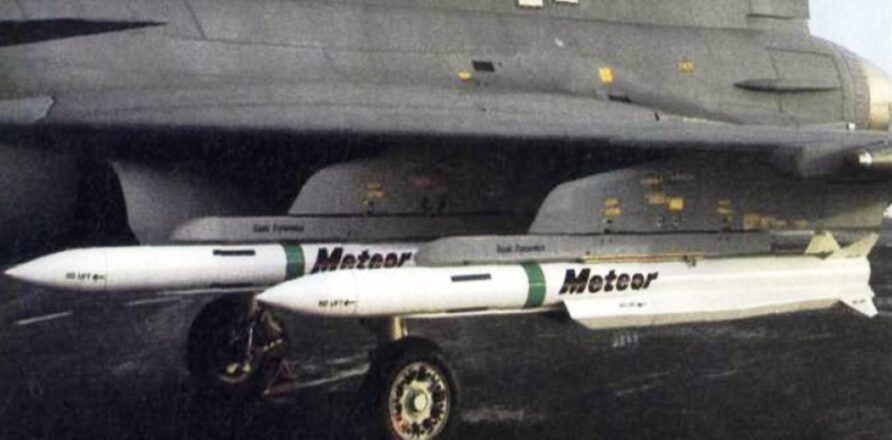
The UK and Japan announced in 2014 their intent to collaborate on the Joint New Air-to-Air Missile (JNAAM) by;
Combining the UK’s missile-related technologies and Japanese seeker technologies
Under Project CENTURION, the RAF integrated Meteor on Typhoon, exploring and developing new tactics to exploit its capabilities and building up sufficient stocks and support arrangements. It was announced in December 2014, the first Meteor firing from Typhoon had taken place
Following contract signature in 2013 for the full integration of Meteor onto Typhoon, the trials continue to demonstrate that the weapon operates effectively with the aircraft.
Led by ourselves with support from MBDA, Selex, Qinetiq and MOD, the trials were conducted in November 2014 at the MOD’s Hebrides firing range in the UK and further developed and tested the integration of the missile with the weapon system as well as expanding the jettison envelope by conducting firings at different altitudes and speeds. The trials also tested the interface of the missile with the weapon system for both pre-launch priming and post launch datalink functions between the missile and radar.
Test pilot Nat Makepeace flew the sortie and said: “The aircraft and the weapon performed exactly as expected. It’s very easy and intuitive to operate, and the trials demonstrated that we can operate in an expanded envelope safely and accurately. This is a significant step forward for the full integration of the Meteor missile onto the Typhoon aircraft.”
Produced by MBDA, Meteor is an active radar guided missile designed to provide a multi-shot capability against long-range maneuvering targets, such as fast jets, small unmanned aerial vehicles and cruise missiles in a heavy electronic countermeasures environment.
Capable of engaging air targets during day and night, and in all-weather conditions, the Meteor will complement Typhoon’s existing missile systems, providing pilots with a greater choice of weapons during combat.
Further firing trials are scheduled to be carried out as part of the Meteor Integration contract to fully expand the launch envelope and weapon system integration which will culminate in the integration being complete in 2017.
In 2017, the MoD awarded MBDA a £41 million contract to start integrating Meteor with F-35B, including modifications to allow internal carriage.
In the same year, a dual firing of a Meteor from a Typhoon was completed.
In 2020, the Japanese MoD approved plans to move ahead with the co-development of the Joint New Air-to-Air Missile (JNAAM) with the United Kingdom.
The project was scheduled to conclude development in 2023.
An AESA seeker would allow the missile to go active sooner in its engagement, allowing the launch aircraft to stop transmitting. It is also reportedly extremely capable against crossing targets.
The Japanese Defense Ministry’s Technical Research and Development Institute is working on AESA radar systems that use gallium nitride, which can generate greater power than gallium arsenide.
The fact that Meteor fits inside an F-35 bay and the AAM-4B may not also have a bearing on the Japanese enthusiasm for Meteor.
The Meteor entered service with the RAF on Typhoon in 2017, 17 years after selection and approximately 25 years since the requirement was first mooted.
The UK and Japan consolidated their earlier cooperation with a new agreement in 2021
Integration of F-35B and Meteor was confirmed in 2021 to be targeted for the mid-2020s
Initial development work for Meteor integration has progressed well. The Lightning Delivery Team within Defence Equipment and Supply (DE&S), through F-35 Joint Program Office has signed a contract to integrate Meteor in the middle of the decade
Additional stocks of AMRAAM have been reportedly purchased to cover the gap.
The £135m Typhoon Phased Enhancement Package 3c contract was let in 2021, designed to improve several Typhoon capabilities, including those of operating Meteor.
Also in 2021, Ben Wallace MP provided evidence to the Defence Select Committee on F-35B numbers, citing the slow pace and fair treatment of UK weapons integration as a reason for slowing the order rate.
Also it’s important that we continue the planned integration of Meteor on the F-35, I don’t want to be put to the back of the queue for that and it’s in all your interests that if you want me to carry on buying F-35 that we keep a lid on those costs and that we are treated fairly integrating a European made missile. We need more than 48 and we will invest in more than 48, but I’m not in the business of giving a blank check to contractors if they don’t play their part in cost controls, support and indeed making sure Britain’s developed capabilities are put on them
Further information was released in December 2021 on the UK/Japan
In February 2022, the Defence Equipment Plan 2021 was published by the MoD.
On Meteor, it noted;
Meteor on F-35B: Meteor is a beyond visual range air-to-air missile featuring active radar guidance and exceptional long-range performance. Developed by a 6- nation partnership, it is currently in service on Typhoon and will undergo modification to allow internal carriage on Lightning II.
Meteor was assigned a place in the Follow-on Development Programme by the F-35 Joint Programme Office and contracts were awarded to Lockheed Martin in the early summer. However, entry into service is not anticipated to be until 2027 and there is a possibility that integration pressures in the programme may incur further delays because of challenges in the wider F-35 programme.
As of September 2022, the Meteor programme has cost the UK approximately £1.2 billion.
Work continued on Spiral Development 1.1 and 2 throughout 2023, and it was reported that a decision on the Mid-Life Update would be due by the end of 2024.
Meteor BVRAAM Capabilities
Obviously, actual capabilities are known only to those that should know. But what seems equally obvious is, that what information is open-source could easily lead to an assumption that the often overused words, ‘game changing’, are entirely appropriate.
The Meteor missile is 3.65m long and weighs 185 kg. The maximum speed is reportedly Mach 4 and the operational range, according to Mr Wikipedia, is 300 plus km.
We don’t know the maximum range for excellent reasons, whatever Wikipedia may say, but, it is widely believed to be very long-range and significantly longer-ranged than comparable missiles currently in service, which is the point.
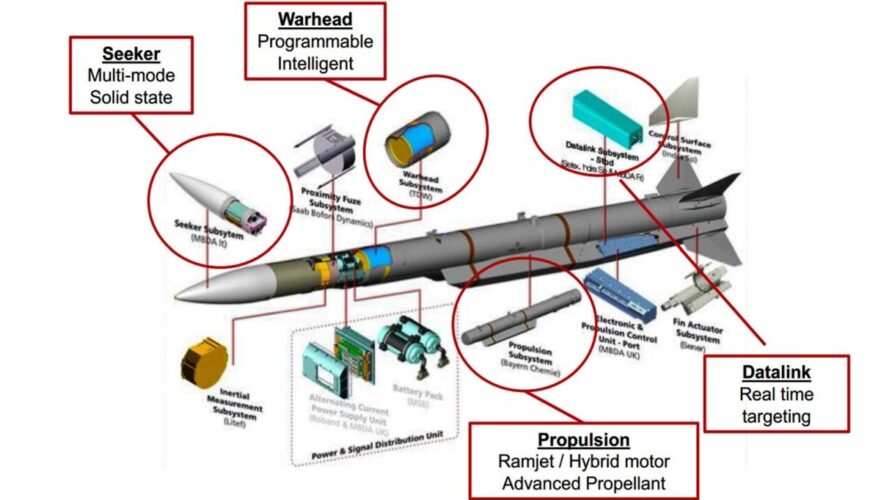
Meteor is truly a European missile, not only is it the missile that drove the industry consolidation in the late nineties that created MBDA where Storm Shadow and ASRAAM failed (Taurus KEPD and IRIS) it is manufactured in many European countries.
- Fin Actuation Sub-System (FAS) from Sener in Spain and MBDA at Stevenage
- Cobham in Dorset makes the Multi-Mission Launcher rail
- Ramjet system from Bayern-Chemie in Germany
- The seeker uses technology from ASTER and MICA, made by Thales and MBDA
- Inertial measurement system (IMS) is made by Litef in German
- Thermal batteries and power systems, ASB in Scotland
- Saab Bofors Dynamics produce the radar proximity fuze
- Parts of the missile body, Indra Sistemas
- Warhead from TDW in Germany, now part of MBDA
And these are just a few examples of the Meteor enterprise.

The Meteor operates in three phases; first, it accelerates to cruising speed and altitude, then in its mid-course phase, the missile optimises its speed and direction in readiness for the final intercept phase. In the intercept phase, by virtue of its propulsion system, Meteor can accelerate to minimise the chances of the target escaping.

It is this ability to retain energy and accelerate in the ‘end game’ that gives Meteor its unique advantage.
In each phase, the secure data link allows the missile and launch aircraft, or indeed, other aircraft, to control the approach and terminal guidance for maximum effectiveness. Although it can be a fire-and-forget missile, Meteor can also be as the sales blurb goes, ‘fire and think’
Another key element of Meteor is that the software can be upgraded without requiring major re-certification work.
MBDA and the development partner nations have continued to develop Meteor, with Spiral 1 and 2 programmes aimed at incremental improvements in performance.
In November 2024, the German government confirmed a 520 million Euro order for Meteor.
Does it fit in the F35B Internal Bomb Bay?
This has been a subject of much speculation since the reverse B to C to B switch, but recent information seems to suggest it will, with some changes to both aircraft and missiles.
The real market for MBDA Meteor on the F-35 is not the B variant, the USMC seems unlikely to purchase Meteor and the other current and potential B operators will only be a relatively small addressable market.
The A model, now that is different, has a much larger market potential.
This puts the UK’s requirement for F-35B internal carriage in the ‘if you want it you pay for it’ category.
A cropped fin design has been developed by MBDA and a feasibility study concluded there were no significant issues to overcome for F-35B internal carriage, accepting that some minor modifications to the bay would be required.
At a Royal Aeronautical Society’s (RAeS’s) conference in November 2015 called ‘Delivering Capability: A Balance Between Weapon and Platform’, Iain Barker, part of the Defence Science and Technology Laboratory’s (DSTL’s) weapons integration team was reported to have said;
With Meteor, neither the weapon nor the platform were designed with each other in mind, we’re having to clip the wings in order to fit into the bay, and make some minor bay modifications. We will still deliver the capability we require.
It has been reported that the fin change and software modification could be carried out in ‘the field’ with the same basic missile common, for example, to the Typhoon and F-35. Whatever the outcome, this does not seem to be a significant issue.
An image of the cropped fin variant is shown below.

And another, also below
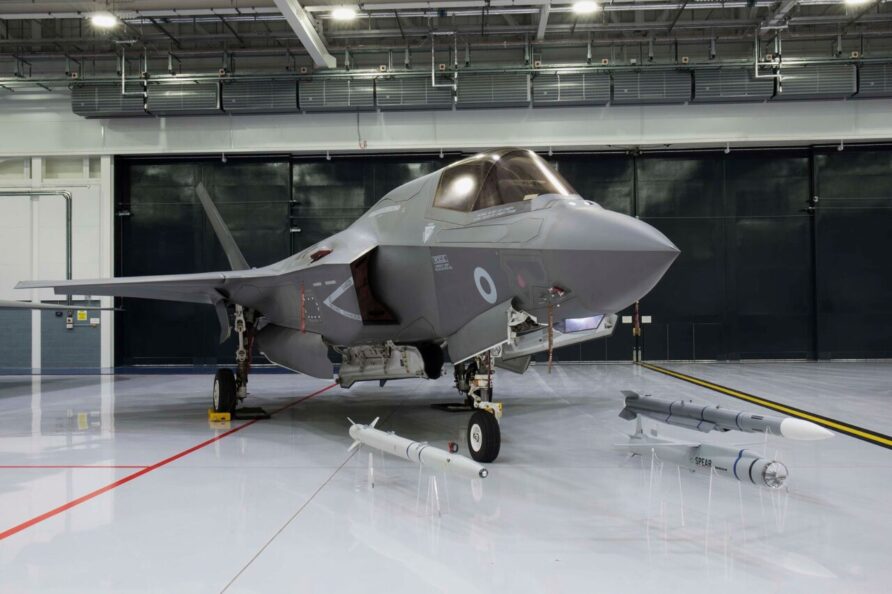
Change Status
| Change Date | Change Record |
| 19/05/2019 | Initial issue |
| 29/07/2021 | Refresh and format update |
| 22/04/2022 | Update on F-35B ISD |
| 13/11/2022 | General update |
| 02/08/2023 | Basic information on spiral development SP1.1 and SP2 added |
| 29/11/2024 | Added German order |

Discover more from Think Defence
Subscribe to get the latest posts sent to your email.

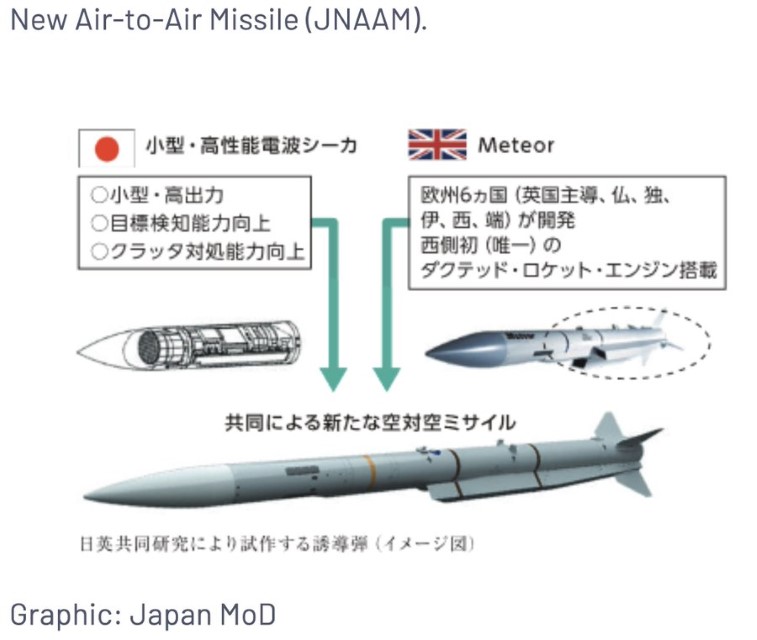
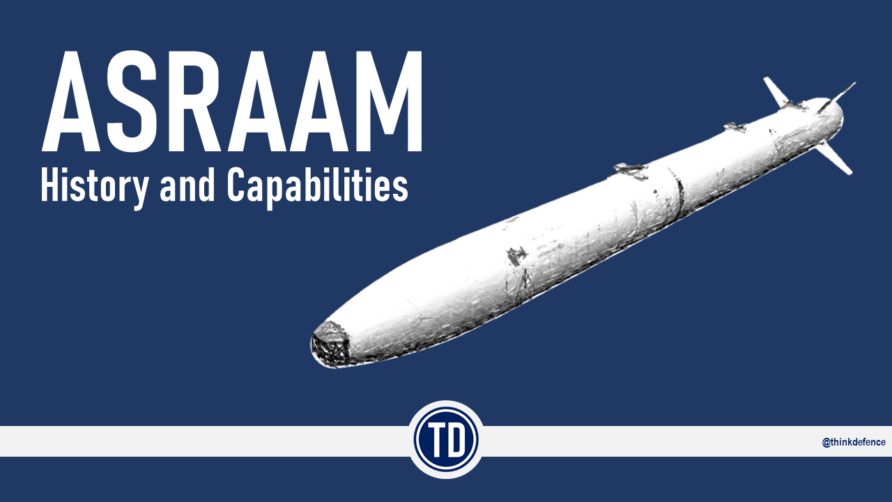


I think the first firing of a production Meteor was from a Gripen. Gripen was also the first to have Meteor operational. Rafale, as an example, did not have dual link capability until later.
https://www.saab.com/newsroom/press-releases/2013/gripen-first-to-fire-meteor-missile
Thanks Roger, will update
will F35B be able to carry 4 internally for certain?
A better question perhaps over whether it will fit is, will we have a carrier borne ASaC platform that can target and control them?
That's modern air-to-air combat. Stealth works best with stand off weapons.